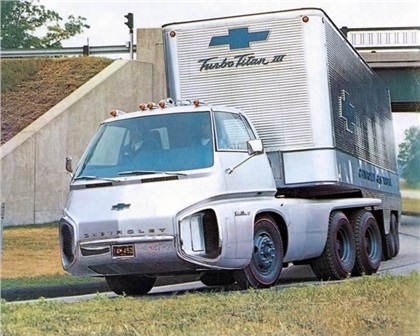
GMC Turbo Titan III

Inside, "Astronaut Seats" with full headrests were mounted on each side of a center console. A wing-topped handle controlling the six-speed automatic transmission was mounted on the console. Full interior carpeting was included along with retractable seatbelts, air-operated windshield wipers, full tinted glass, and air conditioning/warm air heating. A four-speaker FM stereo radio and a two-way telephone were used for the first time.

The most novel feature, though, was the GM designed and engineered "dial steering system." This unit was mounted on a pedestal in front of the driver, replacing the conventional steering column and wheel. Twin dials mounted on a padded vinyl panel operated the platforms power steering. An auxiliary pump driven from the propeller shaft provided emergency usage if the main pump failed for any reason when the platform was in motion. The automatic transmission quadrant was also mounted on this panel along with the turn signals. The pedestal pivoted forward and back along with the panel for the most comfortable driving position.

Chevrolet Turbo Titan III, 1965 - Magazine Ad
Source: sporttruck.com
